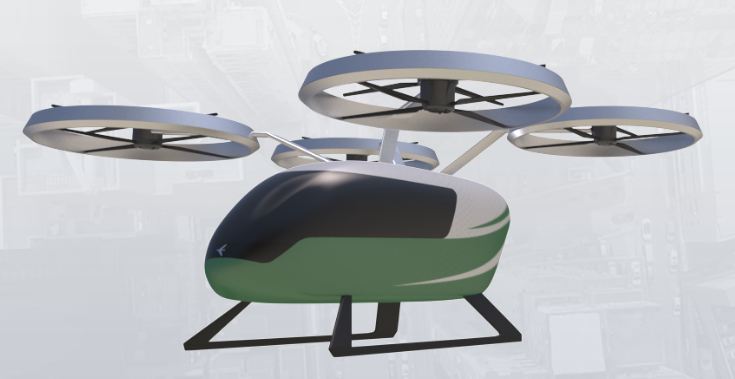Introduction
In today’s world, the number of people using a private car is growing steadily. Problematically, the increase in traffic leads to traffic jams for many kilometers. The task of engineers is to create alternative vehicles capable of relieving the jam. One such option is electric Vertical Takeoff and Landing platforms (eVTOL). The primary purpose of this essay is to discuss the details that accompany the implementation of eVTOL.
Main body
The main feature of this alternative to a conventional car is the ability to move by air. According to Li, Hong, and Zhang (2016), travel delays in 2015 caused by congested roads took an average of an additional 42 hours for drivers. To avoid traffic jams, eVTOL should perform the same functions, but be more efficient. Thus, the platform looks like a mixture of helicopter and drone, has several passenger seats, and is unmanned (Kadhiresan & Duffy, 2019).
The drone has a streamlined hull shape that prevents wind resistance (Wasim, Ullah, & Iqbal, 2018). The design of the platforms is based on the intended purpose: eVTOL can be used as personal transport and as a substitute for public transportation.
The requirements for a crewless aircraft are very high. In addition to the well-known standards for unmanned vehicles, eVTOL must also ensure the safety of passengers during flight and boarding (Jones, 2017). Each state has its criteria for permission to take off. For this reason, unmanned aerial vehicle models appearing on the market must comply with the regulations of the country in which they are used.
For eVTOL to be in demand among the population, it should not be costly. Currently, an extensive survey of citizens is being conducted, which is designed to optimize the implementation of eVTOL (Garrow, German, Mokhtarian, & Glodek, 2019). Thanks to such projects, engineers will be able to achieve a democratic cost of passenger transportation that does not exceed the price of a taxi.
Conclusion
Based on all the above, it is worth noting that society needs to develop alternative means of transportation. In this paper, the analysis of the process of the introduction of electric vertical runways and landing sites in the infrastructure of the city was carried out. Due to traffic jams on the roads, eVTOL should surpass its analogs in several factors: traffic jams prevention, safety, and low cost of travel. Thanks to the virtual simulator, the reader can design eVTOL and see how it will look.

References
Garrow, L. A., German, B., Mokhtarian, P., & Glodek, J. (2019). A survey to model demand for eVTOL urban air trips and competition with autonomous ground vehicles. IAIAA Aviation 2019 Forum, 2871. Web.
Jones, T. (2017). International commercial drone regulation and drone delivery services. [Research report No. RR-1718/3-RC]. RAND Corporation. Web.
Kadhiresan, A. R., & Duffy, M. J. (2019). Conceptual design and mission analysis for eVTOL urban air mobility flight vehicle configurations. AIAA Aviation 2019 Forum, 2873. Web.
Li, Z., Hong, Y., & Zhang, Z. (2016). An empirical analysis of on-demand ride sharing and traffic congestion. 2016 International Conference on Information Systems.
Wasim, M., Ullah, M., & Iqbal, J. (2018). Taxi model of unmanned aerial vehicle: Formulation and simulation. 2018 1st International Conference on Power, Energy and Smart Grid (ICPESG), 1-6.